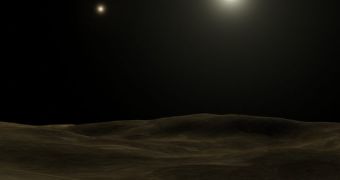Scientists say that one way of ensuring our species will survive whatever the Universe may throw against it is to spread amongst the stars. This may be achievable through suspended animation, or perhaps by sending spacecraft carrying our DNA to other planets.
This is a very interesting perspective on space exploration. It is not necessarily the best one, or the one we would prefer to hear, but it is currently the only feasible one. The most severe limitation our species is faced with today is that of the maximum speed our spacecraft can achieve.
Engineers managed to create propulsion systems that push space probes to 0.005% of the speed of light, but that means that a trip from the Sun to Alpha Centauri – the nearest star, located just 4 light-years away – would take about 80,000 years.
Even if we managed to achieve suspended animation technology, its basic principles would only prolong our life, not make us immortal. It is unfeasible to believe that a single person could remain in suspended animation for 80,000 years, or even a quarter of that time, Daily Galaxy reports.
On the other hand, sending the seeds of life on another world is another story entirely, explains the Emory University Candler professor emeritus of physics, Sidney Perkowitz. Unmanned ships could easily carry both DNA and other resources that may be needed to colonize a new world.
But the ultimate goal, for now at least, should be the creation of a thruster technology capable of achieving high velocity. If this were possible, then the length of time people would have to spend in suspended animation would decrease as well.
Scientist Miguel Alcibierre proposed one of the most interesting ideas in recent years, which was to create a machine capable of contracting spacetime in front of a spacecraft, and then expand it at its rear.
The ensuing bubble would propel the spacecraft through spacetime nearly instantly, allowing for immediate transport between planets and star systems. The neat thing about it is that this approach would not violate Einstein's theory of special relativity.
There are even pristine mathematical models that explain how this can be done. However, in order for this approach to work, we would need something called negative mass, which has yet to be discovered.

 14 DAY TRIAL //
14 DAY TRIAL //